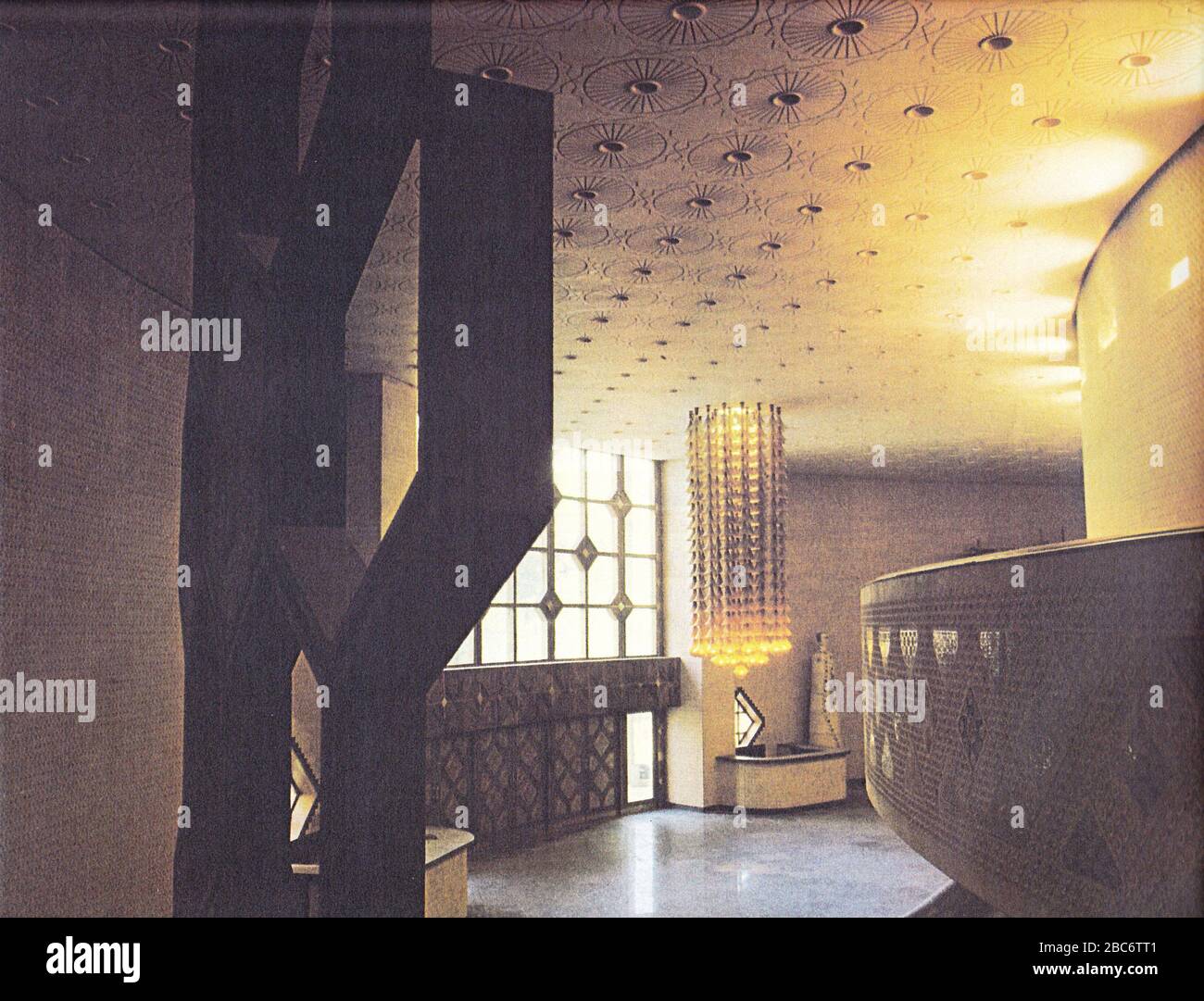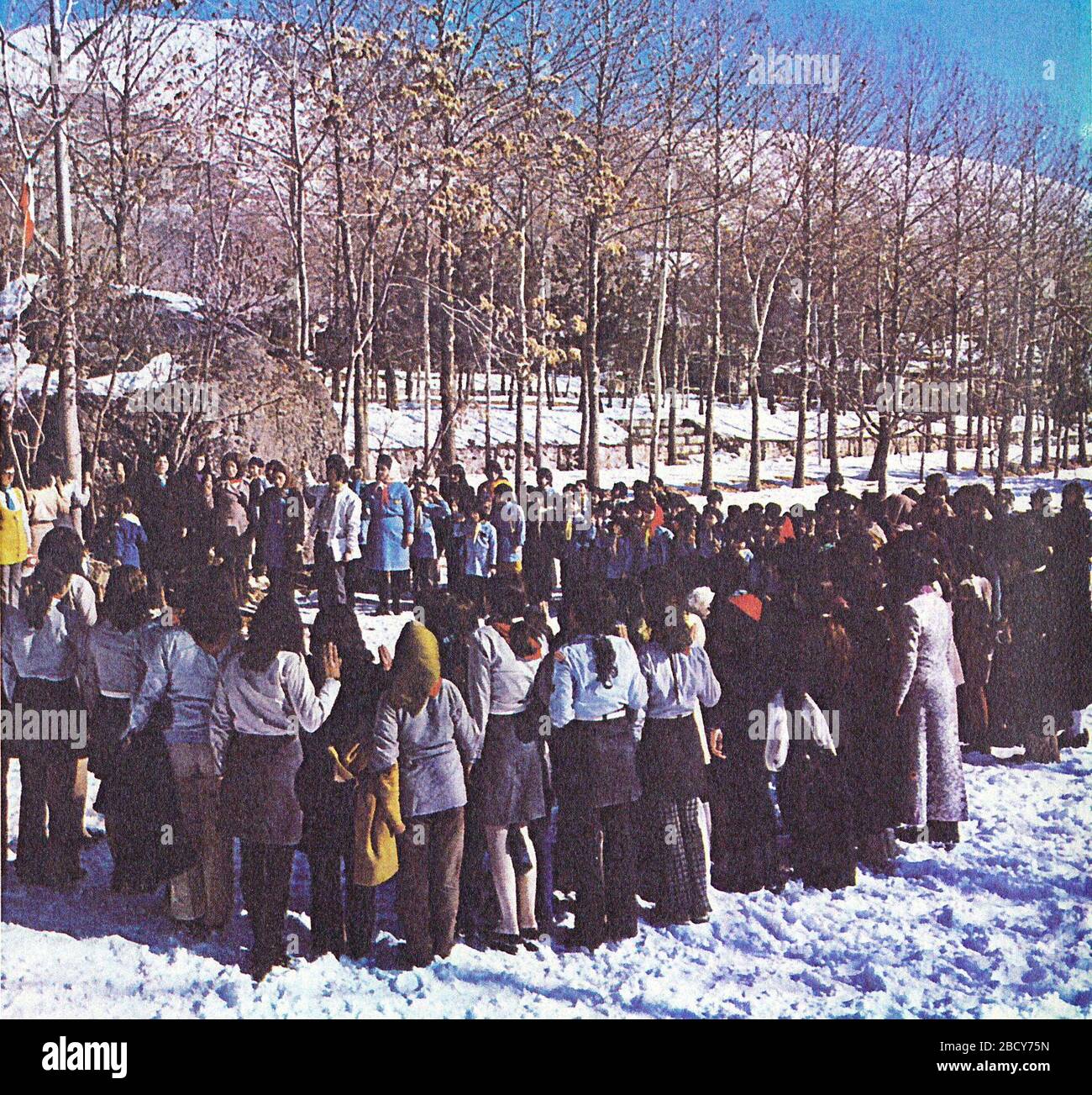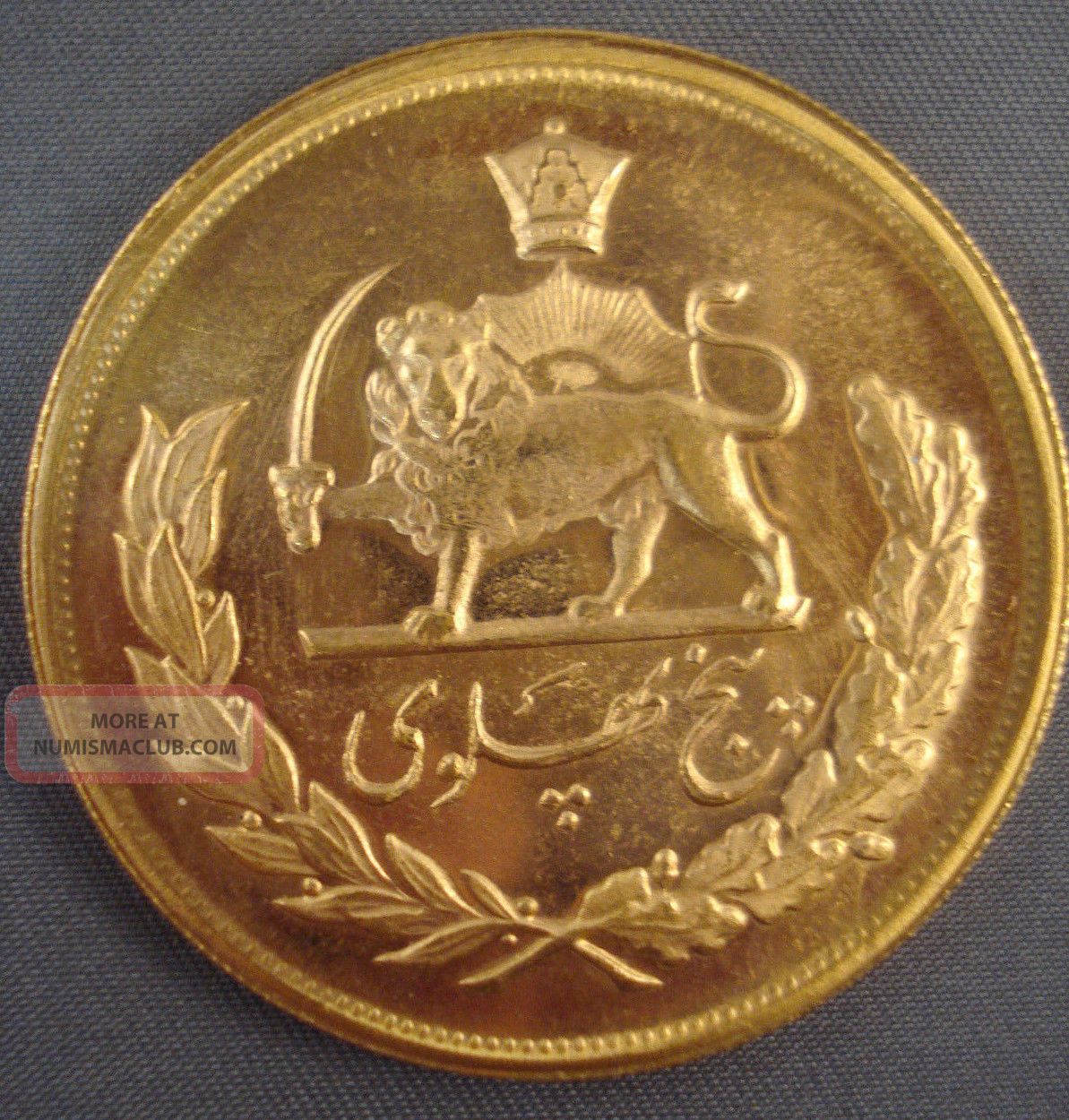1975 Iran: A Nation On The Cusp Of Transformation
**Table of Contents** * [The Shah's Reign: A Kingdom in Transition](#the-shahs-reign-a-kingdom-in-transition) * [The Algiers Accord: Reshaping Regional Diplomacy](#the-algiers-accord-reshaping-regional-diplomacy) * [Politics and Power: The Rise of the Rastakhiz Party](#politics-and-power-the-rise-of-the-rastakhiz-party) * [Women's Rights: A Progressive Leap Forward](#womens-rights-a-progressive-leap-forward) * [Cultural Vibrancy: Tehran's Modern Pulse](#cultural-vibrancy-tehrans-modern-pulse) * [Forouzan: An Icon of Persian Cinema](#forouzan-an-icon-of-persian-cinema) * [Economic Landscape: Prosperity and Underlying Tensions](#economic-landscape-prosperity-and-underlying-tensions) * [Echoes of Discontent: Seeds of Revolution](#echoes-of-discontent-seeds-of-revolution) * [A Nation on the Brink: The Final Years](#a-nation-on-the-brink-the-final-years)
## The Shah's Reign: A Kingdom in Transition From 1941 to 1979, Iran was ruled by King Mohammad Reza Pahlavi, the Shah, who embarked on an ambitious program of modernization and Westernization known as the White Revolution. By 1975, his reign had spanned over three decades, marked by significant economic growth fueled by oil revenues and a strong alliance with Western powers, particularly the United States. The Shah envisioned Iran as a regional superpower, a modern, secular state that would blend its rich Persian heritage with the advancements of the West. This vision manifested in grand infrastructure projects, educational reforms, and a burgeoning urban middle class. However, beneath this veneer of progress, discontent simmered. The Shah's increasingly autocratic rule, characterized by the suppression of political dissent and a growing gap between the wealthy elite and the struggling masses, alienated significant portions of the population. While many embraced the modernizing reforms, others, particularly traditionalists and religious conservatives, viewed the rapid Westernization as an affront to Iran's Islamic identity and cultural values. The year 1975, therefore, represents a fascinating snapshot of a nation caught between two worlds, striving for a modern future while grappling with the implications of its past and the growing pressures of a populace increasingly vocal in its demands for change, albeit often in hushed tones due to pervasive surveillance. ## The Algiers Accord: Reshaping Regional Diplomacy One of the most significant diplomatic achievements for Iran in 1975 was the signing of the Algiers Accord on March 6, 1975. This pivotal agreement, mediated by Algeria, resolved long-standing border and political disputes between Iran and Iraq, particularly concerning the Shatt al-Arab waterway. Under the terms of the accord, Iraq agreed to move the maritime boundary between the two countries to the thalweg – the deepest part of the river channel – conditioned on Iran’s withdrawal of support for the Iraqi Kurds. This was a major concession from Iraq, which had previously insisted on the boundary being along the eastern bank. The Algiers Accord served as the basis for additional bilateral treaties signed on June 13, 1975, and December 26, 1975, solidifying the new border arrangements. This diplomatic breakthrough significantly improved relations with most Gulf states, as it brought a period of relative stability to a historically volatile border region. For the Shah, it was a testament to Iran's growing regional influence and diplomatic prowess, demonstrating his ability to secure favorable terms for his nation on the international stage. The accord temporarily de-escalated tensions, allowing both nations to focus on internal development, though the peace it brought would ultimately prove fragile in the years to come. ## Politics and Power: The Rise of the Rastakhiz Party The political landscape of 1975 Iran saw a dramatic shift with the consolidation of power under the Shah's new monarchist party, the Rastakhiz Party. Parliamentary elections were held in Iran on June 20, 1975, and the results were a stark demonstration of the Shah's authoritarian grip. All 268 seats were won by the Rastakhiz Party, effectively turning Iran into a one-party state. This move effectively eliminated political opposition and consolidated the Shah's control, leaving no legitimate avenue for dissent within the political system. While official reports claimed a voter turnout of 78.6% – with 70% (9.8 million) of an electorate of 14 million registering to vote, and 78% of the electorate (about 7 million) casting its vote – the lack of genuine political competition raised questions about the legitimacy of the process. The efforts to organize the Rastakhiz Party during March 1975 and October 1978 were largely unsuccessful in fostering genuine public support and instead led to the escalation of public animosities. By centralizing all political activity under one party, the Shah inadvertently pushed opposition movements underground, where they would fester and grow, eventually contributing to the revolutionary fervor that swept the country just a few years later. The suppression of alternative voices created a pressure cooker environment, where grievances had no formal outlet, leading to a build-up of revolutionary sentiment. ## Women's Rights: A Progressive Leap Forward Amidst the political consolidation, 1975 Iran also witnessed significant advancements in women's rights, a cornerstone of the Shah's modernization agenda. The Iranian women's rights movement had gained considerable momentum under the Pahlavi dynasty, advocating for greater equality and participation in public life. In 1975, the Family Protection Law provided new rights for women, marking a progressive step for its time in the Middle East. This law, building upon earlier reforms, granted women more rights in matters of marriage, divorce, and child custody, aiming to modernize family law in line with international standards. Beyond legal reforms, women were also allowed to take part in public office, with increasing numbers of women serving in parliament, judiciary, and other governmental roles. Street fashion in Tehran, circa 1970s, reflected this societal shift, with many women opting for Western attire, including miniskirts and un-veiled hair, a stark contrast to the traditional Islamic dress. These changes represented a significant departure from traditional norms and were celebrated by many as a sign of Iran's progress and modernity. However, these reforms also became a point of contention, particularly among conservative religious factions, who viewed them as an imposition of Western values and a departure from Islamic principles. The Iranian Revolution, when it arrived, was in many ways a gendered revolution, with much of the new regime's policies specifically targeting the rollback of these very rights, demonstrating how deeply intertwined social reforms were with political and religious ideologies. ## Cultural Vibrancy: Tehran's Modern Pulse The cultural scene in 1975 Iran, particularly in its capital Tehran, was a vibrant reflection of the Shah's modernizing vision. The city was a hub of artistic expression, fashion, and entertainment, openly embracing Western influences while still celebrating Persian heritage. The street fashion in Tehran, circa 1970s, as mentioned, showcased a blend of traditional and contemporary styles, with many young people adopting trends from Europe and America. Cinemas flourished, showcasing both Iranian and international films, and a thriving music scene captivated audiences. A testament to this cultural openness was the concert by Frank Sinatra, held at Aryamehr Stadium in Tehran on November 24, 1975. Live at Aryamehr Stadium was a landmark event, with Bill Miller conducting the orchestra. Prior to the concert, Sinatra and his orchestra, mostly composed of American musicians, apart asides from the British Vic Ash and the Irish Bobby Lamb, played for various dignitaries. This event symbolized Iran's integration into the global cultural landscape and its embrace of international entertainment. Such public displays of Western culture, while popular with a segment of the population, also fueled the grievances of those who felt their traditional values were being eroded. The celebration honoring the founding of the monarchy and various national holidays further underscored the Shah's efforts to foster a sense of national identity distinct from religious interpretations. ### Forouzan: An Icon of Persian Cinema Among the luminaries of Iran's thriving cultural scene in 1975 was the Persian actress Forouzan. Born Parvin Kheirbakhsh, Forouzan was a celebrated figure in Iranian cinema, known for her captivating performances and charismatic screen presence. Her career spanned the 1960s and 1970s, making her one of the most recognizable faces of the era's film industry. She often portrayed strong, independent women, resonating with a society undergoing rapid social change. Her films, ranging from melodramas to comedies, were immensely popular, drawing large audiences and contributing significantly to the golden age of Iranian cinema before the revolution. Forouzan's presence in 1975 epitomized the burgeoning artistic freedom and the growing popularity of secular entertainment that characterized pre-revolutionary Iran. Her career, like that of many artists of her time, would be drastically impacted by the Islamic Revolution of 1979, which brought seismic changes to Iran, not least for women and the arts. | Personal Data | Details | | :------------------- | :------------------------------------------------------------------------------------------------------ | | **Full Name** | Parvin Kheirbakhsh (Stage Name: Forouzan) | | **Born** | August 9, 1937, Bandar-e Anzali, Iran | | **Died** | January 24, 2016, Tehran, Iran | | **Occupation** | Actress, Singer, Producer | | **Active Years** | 1960s – 1970s | | **Notable Works** | *Ganj-e Qarun* (1965), *Sultan-e Ghalbha* (1968), *Dalahoo* (1967) | | **Impact** | One of the highest-paid actresses of her time, symbol of pre-revolutionary Iranian cinema and modernity. | ## Economic Landscape: Prosperity and Underlying Tensions Economically, 1975 Iran was largely characterized by a period of significant growth and apparent prosperity, fueled by its vast oil reserves. The Shah's modernization programs had led to substantial investments in infrastructure, industry, and education. This economic boom resulted in a relatively high standard of living for many, particularly in urban centers. Considering that Iran had almost full employment in 1978, with half the current population, and the Shah's reign lasted 38 years versus 31 years for the Islamic Republic of Iran (IRI), then based on most of your numbers, Iran should have been thriving. This data suggests a robust economy that was capable of providing opportunities for its citizens. However, this prosperity was not evenly distributed. Rapid urbanization led to overcrowding in cities, and the benefits of the oil boom often disproportionately favored the elite and those connected to the regime. Inflation, corruption, and a widening gap between the rich and the poor created underlying economic tensions. While the official statistics painted a picture of progress, the lived experience for many was one of struggle and inequality. This disparity, coupled with the lack of political freedom, contributed to a growing sense of frustration among the populace, setting the stage for the economic grievances to merge with political and religious discontent, ultimately fueling the revolutionary movement. ## Echoes of Discontent: Seeds of Revolution Despite the outward appearance of stability and progress, 1975 Iran was a period where the seeds of revolution were being sown, often subtly, sometimes overtly. The Shah's suppression of political opposition, exemplified by the Rastakhiz Party's absolute dominance, meant that grievances had no legitimate outlet. This led to an escalation of public animosities, pushing dissent underground where it became more radicalized. While security forces forcibly suppressed protests, the public reaction to these suppressions varied significantly. For instance, one incident might generate almost no public outcry, while another, perhaps involving greater brutality or a more symbolic target, would echo throughout Iran and quickly become a rallying point for revolutionary mobilization. The "Iran Iran" or "Allah Allah" chants, which would become famous revolutionary songs, were beginning to resonate with a population increasingly disillusioned with the Shah's secular monarchy and yearning for a return to perceived Islamic values. The Iranian Revolution was, as noted, a gendered revolution, meaning that issues related to women's rights and societal roles were central to the revolutionary discourse, with conservative factions viewing the Shah's reforms as an attack on traditional Islamic family values. This complex interplay of political repression, economic inequality, and cultural-religious grievances created a volatile mix that would soon ignite. ## A Nation on the Brink: The Final Years As 1975 drew to a close, Iran was undeniably a nation on the brink. The events of this year – from the diplomatic triumph of the Algiers Accord to the political consolidation under the Rastakhiz Party, the progressive strides in women's rights, and the vibrant cultural scene – all contributed to a complex narrative. The Kodak slide show of 1975 Iran and various photos of Iran before the Islamic Revolution of 1979 often depict a modern, bustling society, a far cry from the images associated with the post-revolutionary era. Yet, these very images, while showcasing progress, also hinted at the underlying tensions that would eventually erupt. The Islamic Revolution of 1979 brought seismic changes to Iran, not least for women, whose lives and roles in public society were dramatically altered. The secular monarchy of Shah Mohammad Reza Pahlavi was replaced with a theocracy led by Ayatollah Ruhollah Khomeini on February 11, 1979. The period of 1975, therefore, serves as a critical lens through which to view the final years of the Shah's reign, illustrating the ambitious yet ultimately unsustainable path he had charted for Iran. It was a time of contradictions, where modernization efforts clashed with traditional values, and economic growth failed to quell political discontent. Understanding this nuanced period is essential to grasping the profound transformation that awaited Iran just four short years later. *** The year 1975 in Iran was a fascinating blend of progress and paradox, a snapshot of a nation striving for modernity while simultaneously grappling with the seeds of its own impending revolution. From significant diplomatic breakthroughs like the Algiers Accord to the controversial consolidation of power under the Rastakhiz Party, and from the advancement of women's rights to the vibrant cultural scene epitomized by figures like Forouzan and events like Frank Sinatra's concert, Iran was a country in dynamic flux. These events, while seemingly disparate, collectively contributed to the complex socio-political landscape that would ultimately lead to the dramatic overthrow of the monarchy in 1979. We hope this deep dive into 1975 Iran has offered you a clearer understanding of this pivotal period. What are your thoughts on the events of this year and their long-term impact? Share your insights in the comments below! If you found this article insightful, consider sharing it with others who might be interested in the history of Iran, and explore our other articles on related topics.
- Sahara Rose Ex Husband
- Maria Burton Carson
- Courtney Henggeler
- Allshubrest
- Meredith Hagner S And Tv Shows

Iran 1975 hi-res stock photography and images - Alamy

Iran 1975 hi-res stock photography and images - Alamy

Iran 1975 (sh1354) Gold 5 Pahlavi Coin